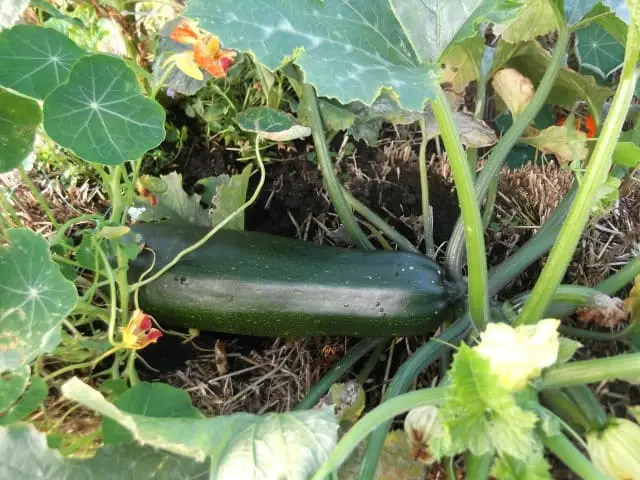Growing vegetables such as Zucchini (courgette) in bales of straw can be a highly productive way to go about it – provided a few ‘golden rules’ of gardening with straw bales are adhered to!
What has to be considered is that on its own a straw bale has no nutritional value whatsoever, and so this situation has to be addressed before anything will grow and prosper in this environment.
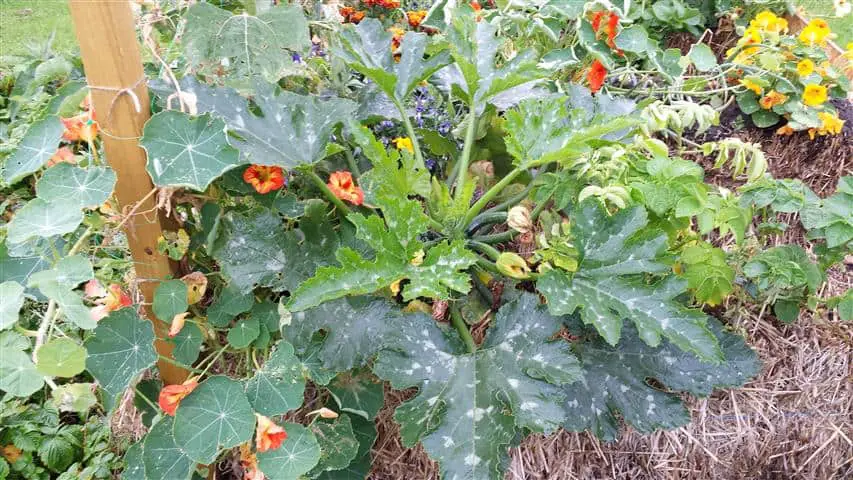
Anyone familiar with straw bale gardening processes will know that a straw bale has to be ‘conditioned’ or prepared before the planting process can begin.
This means that over a period of 2 weeks or so the straw bale is subjected to frequent watering with the addition of a high nitrogen content fertilizer. Lawn fertilizer is usually good for this, but make sure it is not a ‘weed & feed’ fertilizer with a herbicide included to kill weeds – this will also kill the proper composting process within the bale!
Some gardeners say you can avoid this conditioning process and just go ahead and start planting anyway. I would NOT recommend this as you will have to spend the rest of the season constantly feeding your plant otherwise it will wither away for lack of nutrients.
You can find out more about straw bale conditioning in this article, but the process is very simple to do and will give the best hope for a successful planting.

Planting Zucchini in a straw bale:
Once you have conditioned the bale the planting process is simple by following these steps.
- Place the straw bale where it will get most sunshine, on its edge with the straw pointing upwards. The folded straw ends should be on the ground.
- Dig 3 holes in each bale by pulling out the straw, at least 6 inches deep and 8 inches across (150 x 200mm).
- Fill the holes with a good compost mix (home made is best) making sure you press the compost down into the hole with your fingers to really pack it into the surrounding straw.
- Create a hole in the compost to plant your zucchini seedlings. Water thoroughly and watch them grow!
That is basically all there is to it when it comes to the planting process, there are of course other elements to growing a successful harvest – as indeed it is with any plants.
Caring for your straw bale garden:
Straw bale gardening is in some cases a water-hungry growing method. In other words the straw bales can dry out quickly especially if they are in an area exposed to the wind.
They can also be vulnerable to collapse if the strings get broken, or indeed if the kids insist on climbing on them for fun!
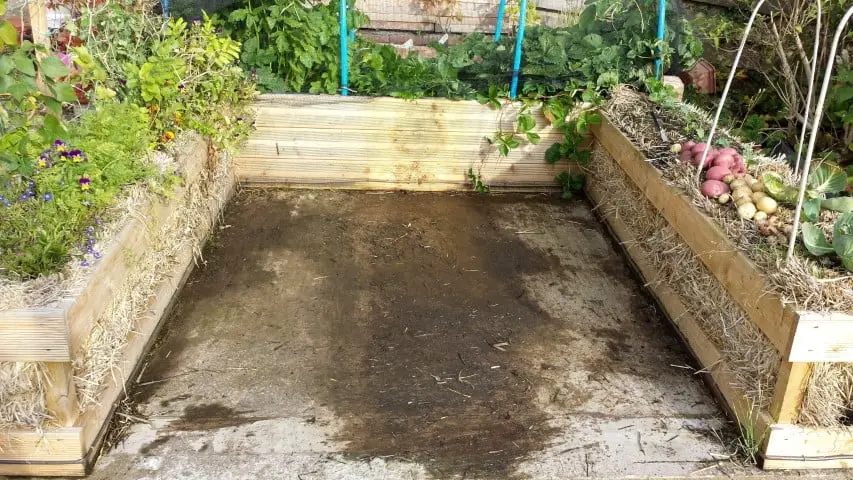
Thankfully there is something you can do in both cases that will not only help prevent the bale drying out, but will make it much more robust – and extend the life of the bale from 2 to 4 years in some cases.
The solution is to encompass the bale with a timber frame, even a partial frame will do as you will see in some of the images. The advantages of a partial frame is that you can also grow plants direct into the side of the bale – some edible flowers such as nasturtium, can turn your veggie garden into a great floral display.
Feeding the Zucchini plants
Bearing in mind that zucchini are nitrogen loving plants – which is why they grow well in a compost heap – it does no harm at all to feed them occasionally, even if the bale has been conditioned according to the regular methods.
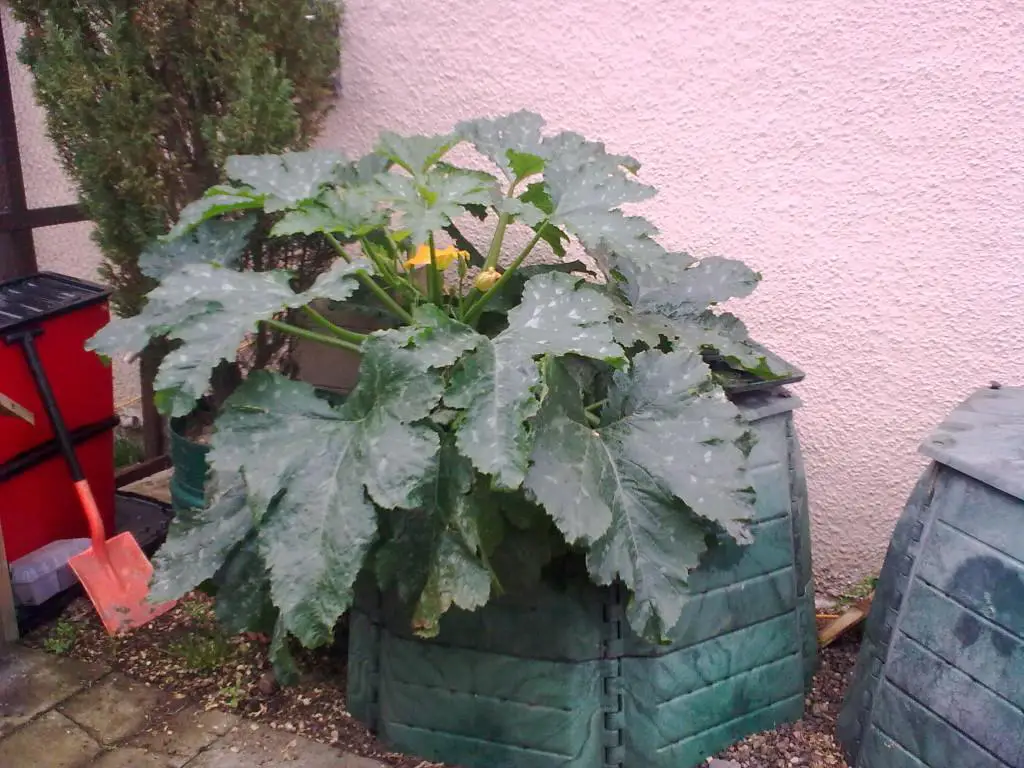
Feeding can be done with a number of store-bought fertilizers, but it’s far better and cheaper to feed with your own ‘home brew’ plant food. Now there are a number of different plant food recipes to choose from, but to keep it simple I just throw a couple of armfuls of comfrey I grow especially for this purpose, into a barrel of water and let it brew for a few weeks.
The resulting (admittedly stinky) liquid is then diluted by adding a couple of inches to the bottom of a watering can filed the rest of the way with water.
This potent mix works on a number of different vegetables including tomatoes, squash, cucumber, peppers etc.
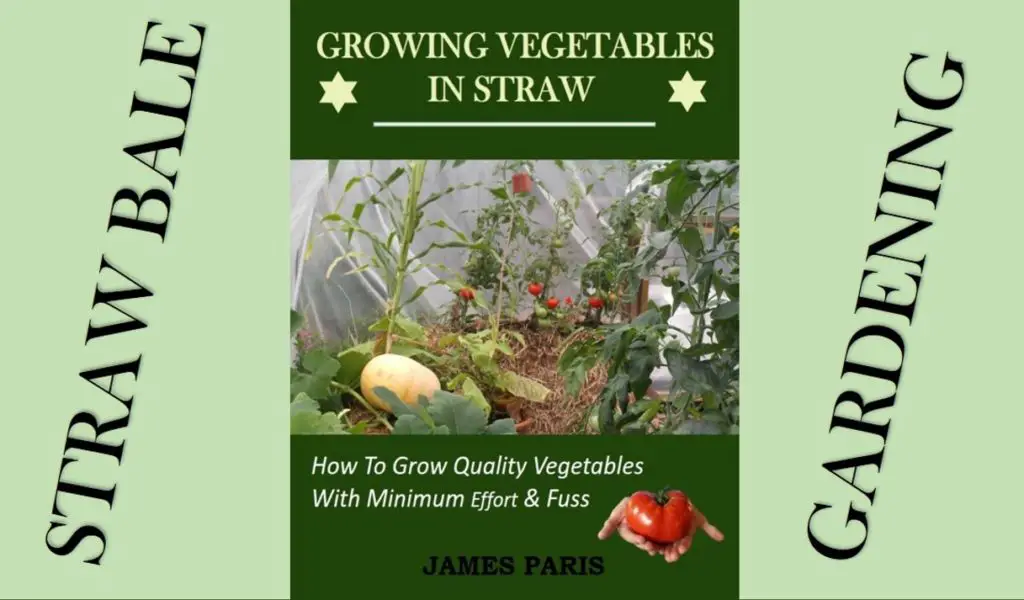
Encouraging growth or more accurately the number of zucchini you are able to harvest, is a matter of harvesting regularly to encourage more zucchini to grow. If you allow the fruits to grow too large before picking then the plant will stop producing more flowers as it becomes overloaded.
Keep in mind that the zucchini flowers are edible and make excellent decoration for meals (they can also be stuffed with cream cheese and other goodies!). It is best to pick mostly male flowers as it is only the females that produce the fruit.
If you are wondering about the difference between the male and female flowers, just look directly behind the flower itself and you will see a tiny fruit if the flower is female, and nothing if it is a male flower.
Stopping blossom end rot:
A common problem with zucchini and many other fruits including tomatoes is blossom end rot. This can be caused by several factors, but is fundamentally a result of calcium starvation. This is particularly common with container gardening where the plant has overgrown the container, and is root bound and struggling to maintain sufficient nutrients to grow healthy fruits.
Blossom end rot is evident by the end part where the flower would have been, rotting away to shrivelled mess and can result in the loss of the entire fruit.
Can you still eat a zucchini that has blossom end rot? Yes indeed you can. Simply cut away the affected area and the rest of the fruit should be fine to eat – it is not poisonous at all.
If your ‘straw bale zucchini’ is showing signs of yellowing leaves or the fruits are rotting at the ends then I would recommend a feeding regime with a comfrey ‘tea’ this is rich I all the nutrients that the plant needs to produce healthy fruits.
Alternatively to deal with the blossom end rot directly I would suggest adding crushed egg shells to the soil. This is best done by putting the dry shells into a blender and reducing to a fine powder. This can be worked into the soil directly and be absorbed by the plant far quicker than just adding broken shells which take forever to break down.
A small carton of Yogurt added to a gallon of water can also work well by adding much needed calcium into the soil where it will have an ‘instant’ effect.
Can Epsom salts prevent blossom end rot? Absolutely NOT. This is a common fallacy. Epsom salts are full of magnesium and have zero calcium content. In fact by adding Epsom salts you are exacerbating the problem as the salts actually prevent the plant from absorbing calcium in the soil.
It has to be said that nutrient deficiency can be a problem in general with straw bale gardening methods. Zucchini along with other vegetables need sufficient nutrients to grow well, and the straw on its own will not supply these nutrients unless it has been properly prepared with sufficient soil to give the plants a ‘head start’, and well conditioned to begin with.

